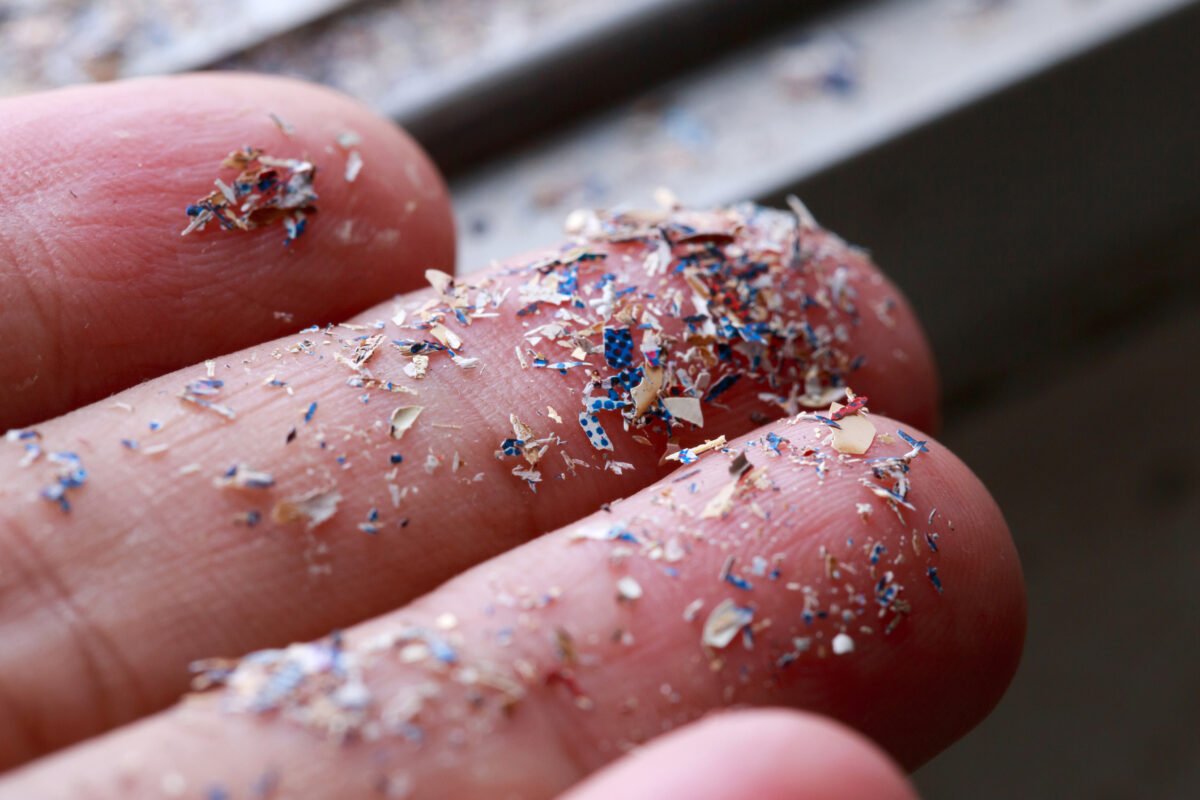Inhaled Microplastics Could Affect Sex Hormones

Microplastics may be more dangerous than first thought after a new study demonstrated that the substances were not only dangerous as chemicals but could also produce a hormone-disrupting effect when inhaled.
For humans, disruptions to sex hormones can impact the body’s fertility and metabolism, which researchers argue could be behind the recently declining fertility and increasing obesity rates around the globe.
Additionally, inhalation of such plastic chemicals can also generate pulmonary inflammation, as well as cardiovascular dysfunction and systematic inflammation.
MNPs can be found both in indoor and outdoor environments making it hard for humans to avoid them.
The trial, which was undertaken by the Rutgers laboratory, showed that MNPs (microscale and nanoscale particles) of the known plastic polyamide—also known as nylon—can produce endocrine-disrupting effects when inhaled by female rats in laboratory conditions, using concentrations that are experienced by humans.
“This is one of the first studies to show endocrine disrupting effects from a plastic particle itself, not based on exposure to the plasticizing chemical,” explained Phoebe Stapleton, PhD, assistant professor at the Rutgers Ernest Mario School of Pharmacy and senior author of the study, in an interview for Rutgers Research.
“Previous research has focused almost exclusively on chemical additives,” Stapleton clarified.
The Study
Scientists noted that if they were to “assess the toxicological consequences of a single inhalation exposure,” they would need an innovative method of study to create airborne microplastics.
To this end, they used a very fine food-grade nylon powder (their MNPs model), which they placed on a rubber pad on top of a bass speaker so that the bass pulse dispersed the nylon in the air for the rats to breathe. They then assessed the toxicological effect of a single 24-hour exposure to MNPs by the female rats and estimated the pulmonary deposits of MNPs and their impact on the lungs, cardiovascular, systematic and endocrine systems.
“Previous studies have injected animals with the particles being studied or fed them to them. We figured out how to aerosolize the MNP to be inhaled just as we breathe it in real life. We expect many labs to use this method for experiments going forward as it better mimics actual exposure,” Stapleton said.
The researchers found that the inhaled particles deposited throughout the rats’ lungs, but this did not lead to significant lung inflammation.
What they did see, though, was an impairment of the animal’s cardiovascular function and that the levels of the reproductive hormone 17 beta-estradiol had decreased.
They explain that the latter was due to the fact that polyamide has a high affinity with estrogenic compounds, which can act as an endocrine disruptor in biological settings.
The main concern of the scientists is that the MNPs have similar effects on humans, and though it is not new that plastics can be harmful to us, the fact that those most microscopic particles are now in the air and we are breathing them is new and worrisome.
“Unfortunately, there’s very little that people can do to reduce exposure at the moment. You can be aware of your flooring, wear natural fibres and avoid storing food in plastic containers, but invisibly small plastic particles are likely in nearly every breath we take,” Stapleton said.
The authors conclude their paper with the hope that more knowledge on the issue will be helpful, “The pervasive nature of MNPs and their adverse effects as presented in this study highlight the need for better understanding of MNP toxicities to support consumer choice, regulatory policy, and environmental remediation.”
What are MNPs?
Microscale (microplastics) and nanoscale (nanoplastics) particles (MNPs) refer to tiny plastic fragments that are less than 5 millimetres and less than one micrometre in size, respectively.
They are a type of plastic pollution that is increasingly becoming a concern due to their widespread presence in the environment.
Microplastics are generally formed through the breakdown of larger plastic items, such as bottles, bags, and packaging materials, as well as from the degradation of synthetic fibres used in textiles.
Nanoplastics, on the other hand, can be intentionally manufactured at the nanoscale or result from the further degradation of microplastics.
These particles are pervasive in various environmental compartments, including oceans, rivers, lakes, soils, and even the air.
They have been found in diverse ecosystems, from the deep sea to the Arctic, and have been detected in numerous organisms, including marine life, birds, and even humans.
The presence of microplastics and nanoplastics raises concerns due to their potential adverse effects on ecosystems and human health.
Marine animals may ingest these particles, leading to physical harm, inflammation, and disruption of their digestive systems.
Additionally, microplastics can act as carriers for toxic substances, such as persistent organic pollutants and heavy metals, which may accumulate in the food chain.
Although research on the impacts of nanoplastics is still in its early stages, there are concerns about their increased mobility, potential for cellular uptake, and interactions with biological systems, as the small size of nanoplastics could enable them to cross cellular barriers and have a more significant impact on organisms.
Efforts are being made to reduce plastic pollution at its source and develop sustainable alternatives.
Additionally, research is ongoing to better understand the environmental fate, behaviour, and impacts of microplastics and nanoplastics, as well as to develop effective detection and monitoring methods.




